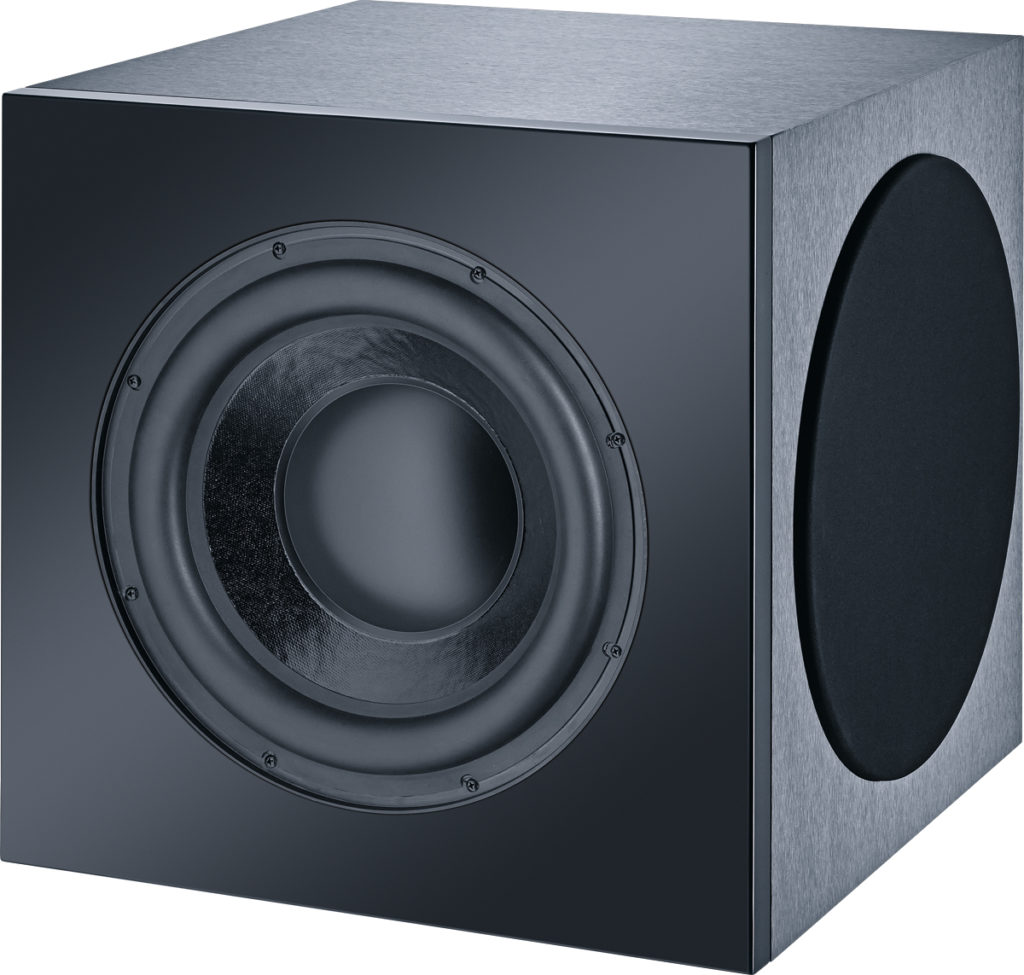Richer bass by Magnat
There is a simple principle when it comes to the construction of subwoofers: If you want more bass you need more volume. Technically speaking. As this principle quickly leads to high cost and low “living room compatibility”, cunning audio engineers have long since found a way to get more bass out of the same volume. Most of the time they rely on a bass reflex tube. Especially high-end subwoofers, however, often use a so-called passive cone. Both principles result in a noticeable increase of bass – which comes in handy especially in home cinema environments.
Same size, more bass
An efficient yet affordable method to raise the level of bass is to use one or more bass reflex tube(s). The speaker housing will then be equipped with an outlet connected to an inward facing tube. Instead of letting the bass that goes into the inside of the housing just vanish, it now directly adds up to the bass directed at the outside. Anyhow, this only works well when the chassis, the size of the housing and the length and diameter of the bass reflex tube are constructed to match each other’s parameters.
Magnat Airflex-Port: Bass reflex done right
The common downside of bass reflex tubes is flow noise. These occur especially at high sound levels when the air flows rapidly through the bass reflex opening. To a certain degree this can be countered by using larger openings, but that means the tube must grow longer as well. This will quickly reach physical limits with most subwoofers, leading to a strong demand for a different solution.
Besides relying on large diameters, Magnat developed the Airflex-Port technology: These bass reflex tubes are equipped with wide rounded openings on both ends, allowing the air to flow through the tube much more smoothly. This way, turbulences and flow noise resulting from air entering or leaving the tube are reduced massively.
Passive cones: A maximum of bass without flow noise
Absolutely no flow noise occurs when a speaker uses passive cones instead of a bass reflex tube. The principle works as follows: On top of the active chassis driven by magnets, additional passive cones are integrated in the subwoofer. These passive cones have no drivers of their own but will be moved simply by the air inside the housing. When developed properly, these additional passive chassis have the same effect as a bass reflex tube: more bass. As there are no openings in the housing, however, flow noise cannot occur at all.
Precise bass for high-class subwoofers
A powerful, deep-frequency bass reproduction will be achieved best by relying on passive cones. That raises the question: Why are not all subwoofers equipped with passive cones instead of bass reflex tubes? The answer is simple: Passive cones only come at comparably high cost. Being a chassis without driver, a passive cone is way more expensive than a simple bass reflex tube. Additionally one needs two passive cones of the same size or a larger passive cone for every actively driven chassis to achieve ideal results. This raises costs even more. Which is exactly why this principle only comes into play with the most high-end subwoofers aimed at highest sound quality rather than a bargain price.
A good example for this is Magnat subwoofer flagship Cinema Ultra SUB300-THX. This high-end bass cube is the most compact subwoofer in the whole world to receive the coveted THX Ultra2 certification. This achievement is possible as the sub relies on two extremely long-throw passive 320-mm-cones that add a lot to the bass produced by the actively driven chassis. The Magnat Cinema Ultra SUB300-THX is available online and in stores at the MSRP of 1,499.00 Euro.

0 Comments